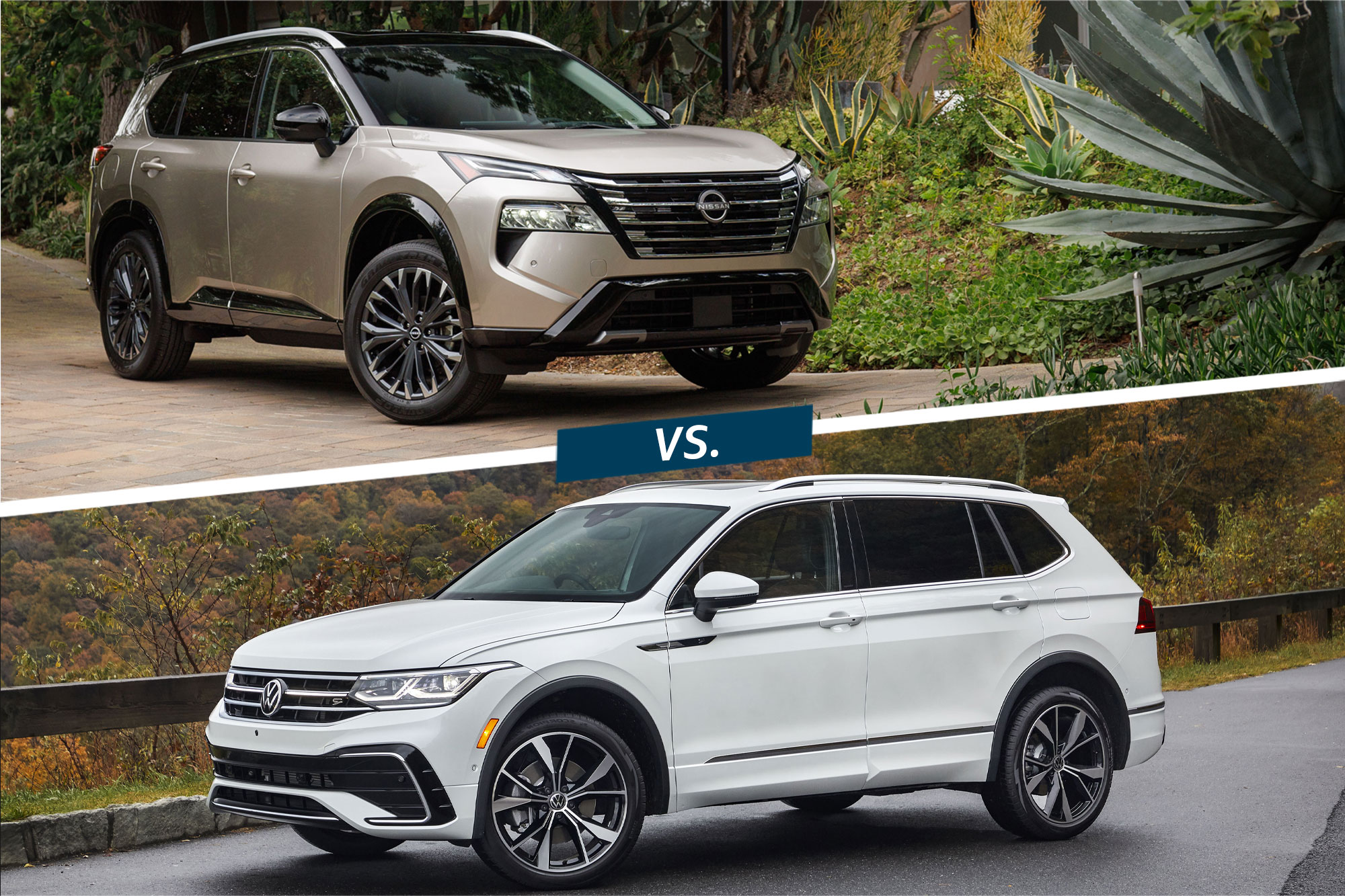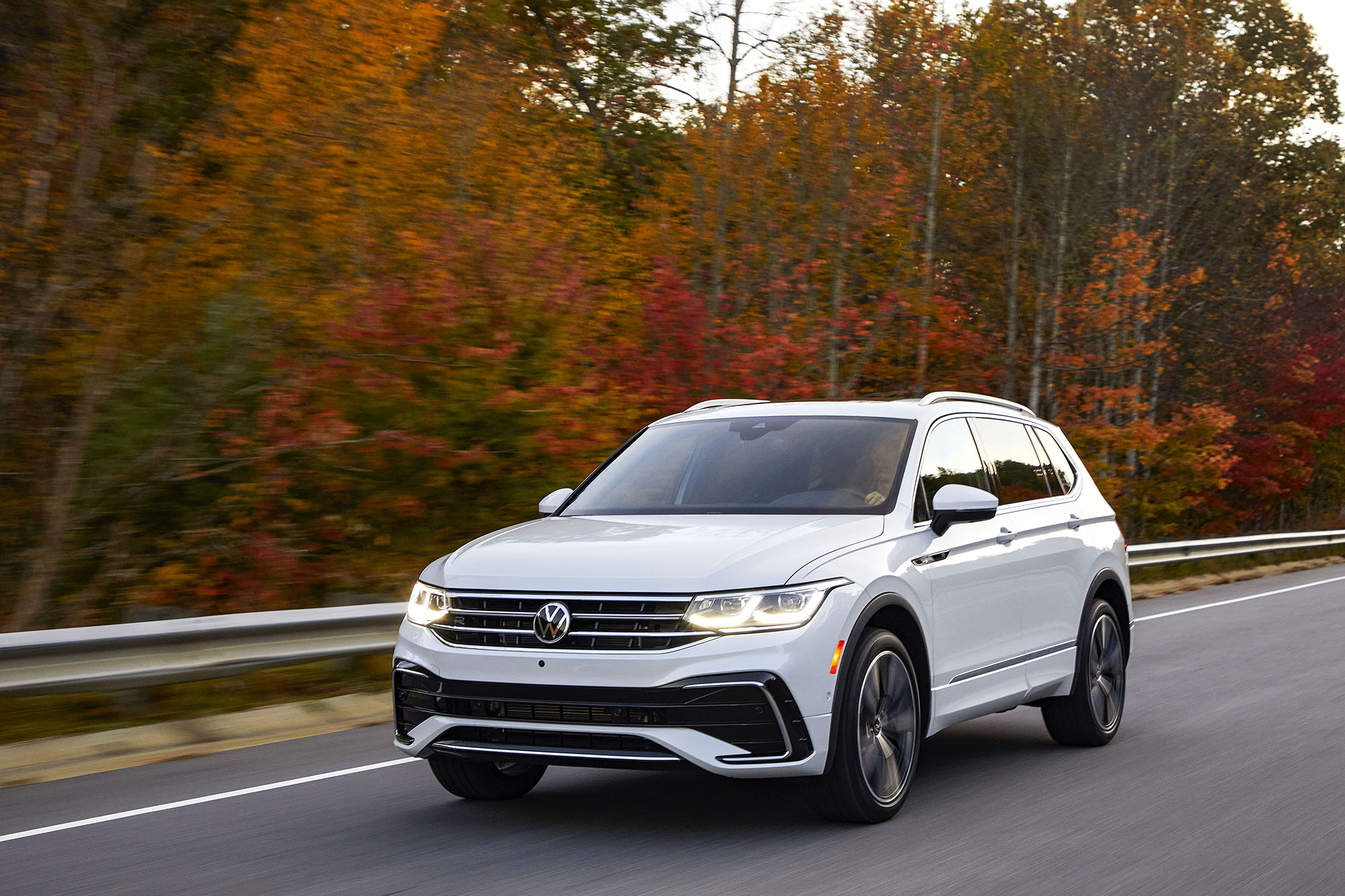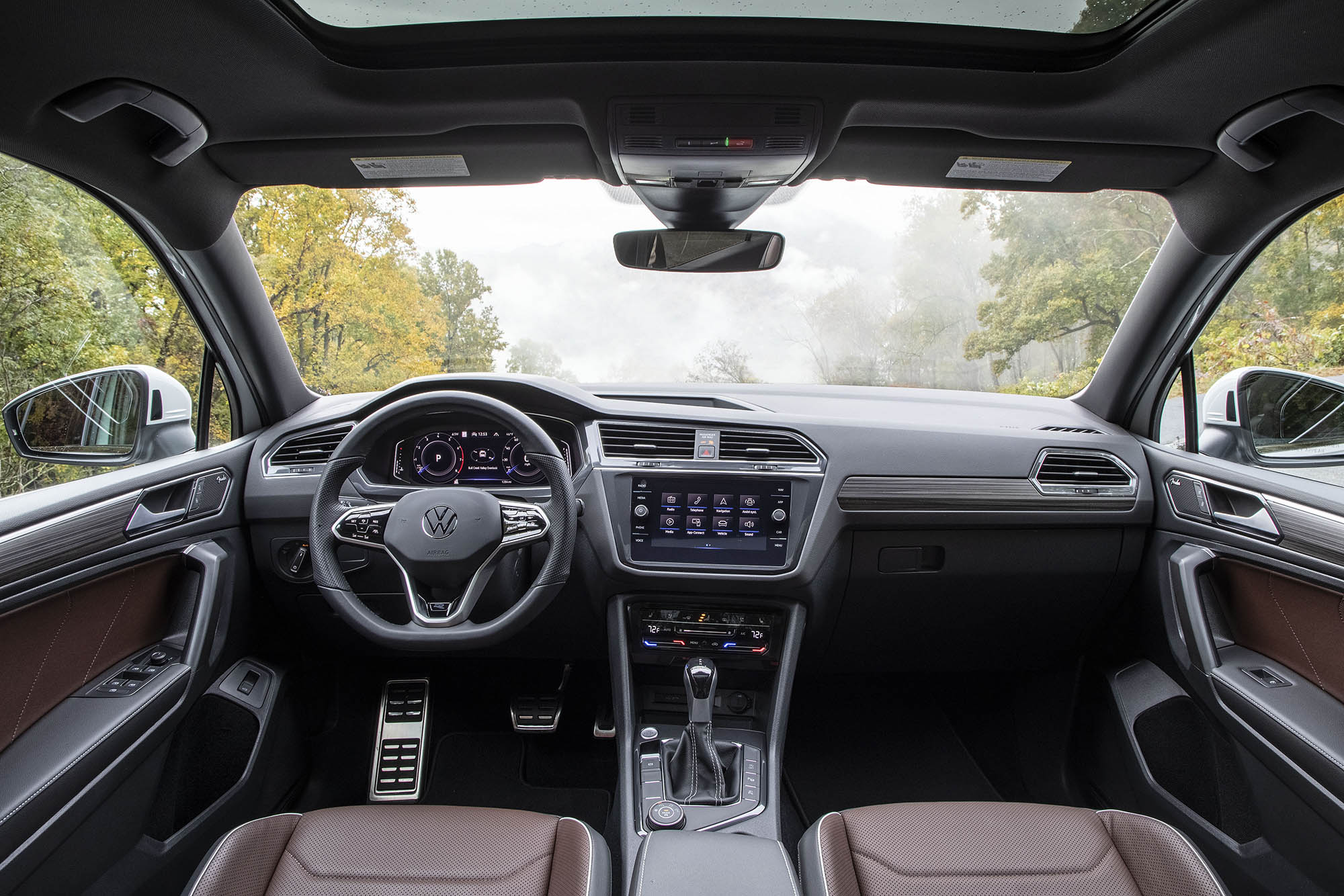Compared: 2024 Nissan Rogue vs. 2024 Volkswagen Tiguan
How does the refreshed Rogue compare with VW's sleek Tiguan compact SUV?
 Nissan | Volkswagen
Nissan | Volkswagen
As family cars, compact SUVs can make a lot of sense, with their spacious cabins and reasonable pricing. For 2024, the Nissan Rogue gets an upgraded infotainment screen and more Google-based tech. Here's a look at the Rogue compared with Volkswagen's popular Tiguan in terms of price, features, and fuel economy.
 Volkswagen
Volkswagen
Rogue Delivers More Power, but Both Cost Around $30,000 to Start
The revitalized 2024 Rogue starts at just about $30,000. This gets you Apple CarPlay integration and Android Auto compatibility, in addition to front-wheel drive (FWD) in the S trim. Power comes from a 1.5-liter three-cylinder engine making 201 horsepower.
The mid-level $36,000 SL FWD trim includes leather seats and a heated steering wheel, and the nearly $41,000 Platinum FWD goes further, adding quilted leather upholstery and a premium Bose stereo. You can get an all-wheel-drive (AWD) version of each Rogue trim, but it requires a price increase of up to $1,500.
 Nissan
Nissan
Although its turbocharged 2.0-liter four-cylinder engine is weaker, with an output of 184 horsepower, the entry-level 2024 Volkswagen Tiguan S matches the Rogue by starting at around $30,000. Apple CarPlay and Android Auto connectivity are available through VW's App Connect.
The Tiguan S and the $33,000 SE — which adds features such as leatherette seating and wireless charging — come standard with FWD, as well. Like the Nissan, the Volkswagen requires an upcharge of $1,500 to add AWD.
The top-of-the-line $40,000 SEL R-Line comes standard with AWD and also brings features such as larger 20-inch wheels, leather upholstery, and a 10.3-inch digital gauge cluster.
 Nissan
Nissan
The Tiguan Seats Seven, but the Rogue Offers More Cargo Space
In physical terms, the biggest difference between these two compact SUVs is passenger capacity. While the Rogue can only seat a maximum of five, the Tiguan has room for up to seven, thanks to a third row in the FWD version.
Despite room for more passengers, however, the VW offers less overall cargo space than the Nissan. Two-row Tiguans have a maximum of 73.4 cubic-feet behind the front seats, while three-row models are limited to 65.3 cu-ft. The five-passenger Rogue is comparatively spacious, with 74.1 cu-ft of space possible.
 Volkswagen
Volkswagen
Nissan has also equipped the Rogue with a larger available touchscreen, measuring 12.3 inches, compared with the 8.0-inch screen offered in the Volkswagen. The Rogue additionally offers Google Assistant capability, which is built into its infotainment system.
 Nissan
Nissan
When It Comes to Fuel Efficiency, the Tiguan Is Outpaced by the Rogue
Most 2024 Rogue trims with FWD score an estimated 30/37/33 mpg in city/highway/combined driving, but the higher SL and Platinum slide to 29/36/32 mpg. Opting for AWD results in 28/35/31 mpg estimates, with the highway estimate dropping to 34 mpg for the SL/Platinum.
 Volkswagen
Volkswagen
The less powerful 2024 Tiguan doesn't perform as well as the Rogue at the pump. The base Tiguan S trim with FWD is the most efficient, achieving 24/31/27 mpg. The AWD versions reduce that result even further, dropping to 22/29/25 mpg for most trims and 1 mpg less combined for the SEL R-Line.
Written by humans.
Edited by humans.
 Brennan Sullivan
Brennan SullivanBrennan Sullivan is a writer and lifelong car fanatic. With an appreciation for all makes and models, Brennan is particularly passionate about the rich history of the automotive industry. In his spare time, he's the caretaker of a 1962 Sunbeam Alpine, and a Golden Retriever named Willow.
Related articles
View more related articles